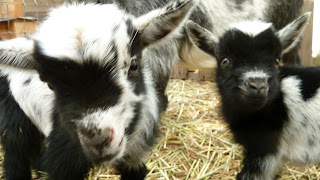Muscle meat is tasty, that's for sure. But, if you are looking to feed your body and give it the essential minerals and vitamins it needs, organ meats are far superior. In a wolf pack the alpha wolf gets first pick of the kill. This wolf chooses to eat the liver and the heart. It leaves the muscle meat for the underlings. The alpha wolf eats those parts, because it wants the most potent, nutrient dense food to consume, so it can remain ontop of the pack. This fascinates me. How could our culture be so far away from this? So, I began to explore eating these foods. I have found that the most palatable way to get them into your diet is to make pate! It is a great way to forge a better culinary relationship with organ meats, you just mix them up with allll kinds of other shit so you can't see or even really taste them! ha!
FAIL PROOF LIVER/HEART/ANY OTHER ORGAN CONSUMPTION RECIPE
1lbs of Liver and Heart (from pastured animals not fed hormones, anti-biotics, and ideally herbally wormed)
4tbls Organic Pasture Butter
3/4lbs of Mushrooms (Criminni or Portabella work very nicely)
3/4 cups cooking wine (Homemade fruit wines are lovely to use if you have them)
1/2 Lemon
1tbls chopped fresh or dried Rosemary
1tbls mustard powder
1tbls dill
1/8 cup chopped Chives
1 cups chopped Onions
4 cloves garlic
1 stick of butter
When preparing the liver and heart the most important thing to do is remove the connective tissue that surrounds the flesh. It is very thin and can be tedious to deal with, but it is essential! Cut it into small chunks with all the sheathing removed. All you should have is a pile of shiny purple flesh.
Cook the onion, garlic, mushrooms, rosemary, and chives together with 2tbls of butter. At the same time you can begin to cook the liver and heart in another pan with the remaining 2tbls of butter. Add in the mustard, dill, and lemon to the meat. Keep cooking until browned. Add the wine to the meat and cook with the lid off until all the liquid is gone.
Once all is cooked combine the mushroom onion dish, 1 stick of butter, and the liver and heart dish in a blender, Cuisinart, or Vita-mix to blend down into a paste. Once it is smooth and well combined put in a container and cool in over night in the fridge.
Eat on crackers, use as a sandwich spread, or eat on carrot sticks! You are effectively eating liver and heart and you will be wanting more!
Another time in South Eastern Asian I was walking down a dusty market street. An old woman came into the market carrying a large silver bowl on top of her head. A crowd formed around her as she began to accept money for whatever was in her bowl. The mob began to rile and push because it seemed she was running out of sales. All the while balancing this bowl. Finally She brought the bowl down and I saw what all the fuss was about. Monkey brains floating in blood! Maybe someday I could be as excited about brains as those villagers were...but for now, I am pleased with my liver and heart pate!






























